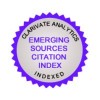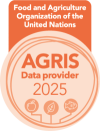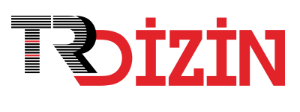Research Article
Short Communication
Aim & Scope
Author Guidelines
Preparation of Manuscripts
Papers must be clearly written in Turkish or English. Manuscripts should be typed double spaced on A4 size paper in 12-point Times New Roman font including the references, table headings and figure captions with standard margins (25 mm) all around. The author's name should appear centred under the title. Numbered (1) note should give the author's institutional address and an asterisked (*) note should indicate the correspondence author’s e-mail address. Degrees and qualifications should not be included.
Please prepare your typescript text using a word-processing package (save in .doc or .docx).
The complete manuscript should be in a single file containing full text, references, figures and tables. Figures and tables should be inside the manuscript placed properly (not at the end of manuscript). The line number should be given to the whole manuscript.
- Research papers and reviews must not exceed 25 manuscript pages including tables and figures (except checklists).
- Short communications, technical notes and reports which are results of brief but significant work, must not exceed 10 manuscript pages including tables and figures.
Title page
The title must be short and concise. The first name and surname of each author should be followed by department, institution, city with postcode, and country. The e-mail address of the corresponding author should also be provided. It is editorial policy to list only one author for correspondence.
It is important that authors ensure the following: (i) all names have the correct spelling and are in the correct order (first name and family name). Occasionally, the distinction between surnames and forenames can be ambiguous, and this is to ensure that the authors’ full surnames and forenames are tagged correctly, for accurate indexing online.
ORCID numbers of all article authors must be listed on the article title page as of June 2017. Authors who do not have an ORCID number are required to register their number at www.orcid.org.
Abstract
English and Turkish abstracts (contributors who are not native Turkish speakers may submit their manuscripts with an English abstract only) of maximum of 300 words should be included in all submissions. The Abstract should be comprehensible to readers before they have read the paper, and reference citations must be avoided. It is essential that the Abstract clearly states the legal importance of the work described in the paper. A list of keywords (maximum six) must be proposed.
Following pages
These should content the rest of the paper and should be organized into an Introduction, Material and methods, Results, Discussion, Acknowledgements and References. Short communication and technical notes both should follow the same layout, without the abstract. In writing of systematic papers, the International Codes of Zoological and Botanical Nomenclature must be strictly followed. The first mention in the text of any taxon must be followed by its authority including the year. The names of genera and species should be given in italics.
Acknowledgements
Acknowledgements should be kept brief and placed before the reference section.
References
Full references should be provided in accordance with the APA style. The usage of reference managers as Mendeley© or Endnote© or an online reference manager as Citefast (http://www.citefast.com/) with the output style of APA 6th edition is advised in organizing the reference list.
For using EGEJFAS style in Mendeley Desktorp please open the software and goto "View" menu item and hover the "Citation style" item and click "More styles..." in dropdown menu. In new window named as "Citation Styles" click the "Get More Styles" on top bar of the window go down of the window and enter the address of EGEJFAS style as "http://csl.mendeley.com/styles/474703351/EGEJFAS" in "Download Style" line and click "Download" button. The reference style of EGEJFAS will be added to your style list. Click "Installed" tab you can see the style on your list of styles. If your manuscript is in English please select "Citation and Bibliography Language" as "English (US)". Click Done to finish your process.
All references must be written in English. The in-text citation to the references should be formatted as surname(s) of the author(s) and the year of publication: (Kocataş, 1978) or (Geldiay and Ergen, 1972); in Turkish article (Geldiay ve Ergen, 1972). For citations with more than two authors, only the first author’s name should be given, followed by “et al.” –in Turkish article ‘vd.’- and the date. If the cited reference is the subject of a sentence, only the date should be given in parentheses, i.e., Kocataş (1978), Geldiay et al. (1971). There should be no parentheses for the citations that the year of the citation is given in the beginning of the sentence, i.e. “In 1978, Kocataş’s study of freshwater ecology showed that…”
When its needed to cite two or more works together, in-text citations should be arranged alphabetically in the same order in which they appear in the reference list, i.e. (Geldiay and Ergen, 1972; Kocataş, 1978; Thurry, 1987) or (Kocataş, 1978, 1979, 1981) or (Geldiay and Ergen, 1972a, 1972b)
All citations should be listed in the reference list, with the exception of personal communications. References should be listed alphabetically ordered by the author’s surname, or first author’s surname if there is more than one author at the end of the text.
Hanging indent paragraph style should be used. The year of the reference should be in parentheses after the author name(s). The correct arrangement of the reference list elements should be in order as “Author surname, first letter of the name(s). (publication date). Title of work. Publication data. DOI
Article title should be in sentence case and the journal title should be in title case. Journal titles in the Reference List must be italicized and spelled out fully; do not abbreviate titles (e.g., Ege Journal of Fisheries and Aquatic Sciences, not Ege J Fish Aqua Sci). Article titles are not italicized. If the journal is paginated by issue the issue number should be in parentheses.
DOI information (if available) should be placed at the end of the reference as in the example. The DOI information for the reference list can be retrieved from CrossRef © Simple Text Query Form (https://doi.crossref.org/simpleTextQuery) by just pasting the reference list into the query box.
The citation of journals, books, multi-author books and articles published online should conform to the following examples:
Journal Articles
Öztürk, B. (2010). Scaphopod species (Mollusca) of the Turkish Levantine and Aegean seas. Turkish Journal of Zoology, 35(2), 199-211. DOI:10.3906/zoo-0904-23
Özbek, M. & Ulutürk, E. (2017). First record of Spongilla lacustris (Porifera: Demospongiae) from the Eastern Black Sea (Uzungöl Lake, Trabzon) (in Turkish with English abstract). Ege Journal of Fisheries and Aquatic Sciences, 34(3), 341-346. DOI: 10.12714/egejfas.2017.34.3.14
Books
Parsons, T.R., Matia, Y. & Lalli, C.M. (1984). A manual of chemical and biological methods for seawater analysis. New York: Pergamon Press.
Chapter in Books
Gollasch, S. (2007). Is ballast water a major dispersal mechanism for marine organisms? In W. Nentwig (Ed.), Biological Invasions (pp 29-57). Berlin: Springer.
Proceedings
Soultos, N., Lossifidou, E., Lazou, T., & Sergedilis, D. (2010). Prevalence and antibiotic susceptibility of Listeria monocytogenes isolated from RTE seafoods in Thessaloniki (Northern Greece). In Ş. Çaklı, U. Çelik, C. Altınelataman (Eds.), West European Fish Technologists Association Annual Meeting 2010 (pp. 94-98). İzmir, Turkey: Proceedings Book.
Online Articles
Andrews, T. (2010). What vitamins are found in fish? Retrieved from http://www.livestrong.com/article/292999-what-vitamins-are-found-in-fish (27.11.2012).
Tables and Figures
All illustrations, except tables, should be labeled ‘Figure’ and numbered in consecutive Arabic numbers, and referred to as Table 1, Figure 1....in the text, unless there is only one table or one figure. Each table and figure, with a concise heading or with a descriptive statement written in English -and Turkish- (only contributors who are native Turkish speakers) should be placed inside the manuscript in proper places. Tables need not to exceed 175 x 227 mm. Figures, which are recommended for electronic formats such as JPEG, TIFF (min. 300 dpi) should be also arranged in available dimensions. When it is necessary, the original copies of the figures will be asked from author(s) as separate files, after the reviewing process being concluded. Tables should be prepared by table tool in Word, tables in picture form will not be accepted.
Copyright Notice
Authors who publish with this journal agree to the following terms:
- Authors retain copyright and grant the journal right of first publication with the work simultaneously licensed under a Creative Commons Attribution License that allows others to share the work with an acknowledgement of the work's authorship and initial publication in this journal.
- Authors are able to enter into separate, additional contractual arrangements for the non-exclusive distribution of the journal's published version of the work (e.g., post it to an institutional repository or publish it in a book), with an acknowledgement of its initial publication in this journal.
- Authors are permitted and encouraged to post their work online (e.g., in institutional repositories or on their website) prior to and during the submission process, as it can lead to productive exchanges, as well as earlier and greater citation of published work (See The Effect of Open Access).
Ethical Principles and Publication Policy
Price Policy
Articles are open access and free to use. Published articles are archived permanently. Proper citation is required when using an article published in the journal.
Indexes
Journal Boards
Director
Editor-in-Chief
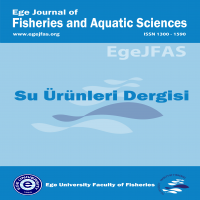
Co-Editor-in-Chief

Technical Editor
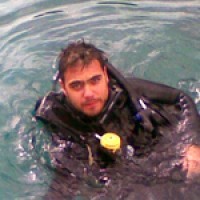
Statistical Editor

İngilizce
Foreign Language Editor





Editorial Office


Editorial Board



